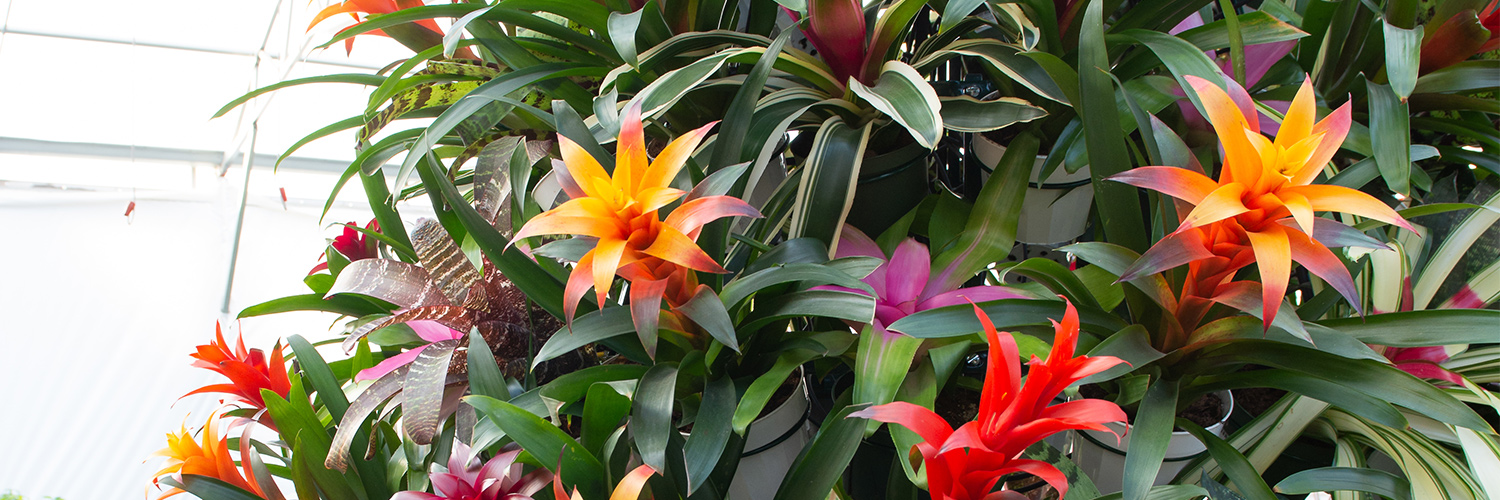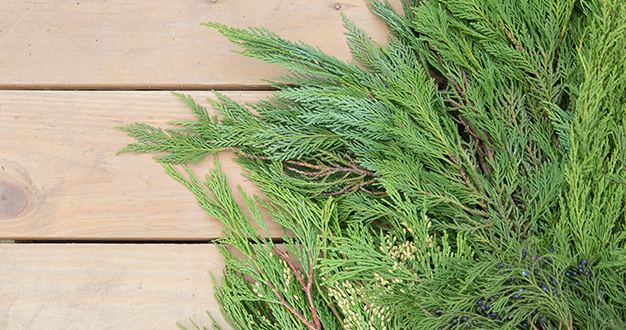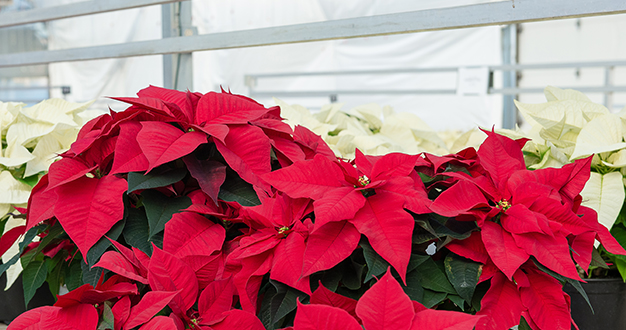
Last year at this time, when we first unveiled our fifteen-foot-tall tropical tree display – made up of two hundred twenty bromeliads and ferns – we knew it’d be a fun twist on the classic poinsettia tree. And it’s a joy to see that you’re just as excited as we are to have it back! Now, every plant is a strappy bromeliad, filling the entire form with bright color and tropical flair. Bromeliads are a fascinating and diverse group of plants, and here, we introduce you to three standouts you’ll find in this year’s tree. If seeing them in our tree inspires you to take one of these beautiful plants home, we also have a few care tips to share with you too.
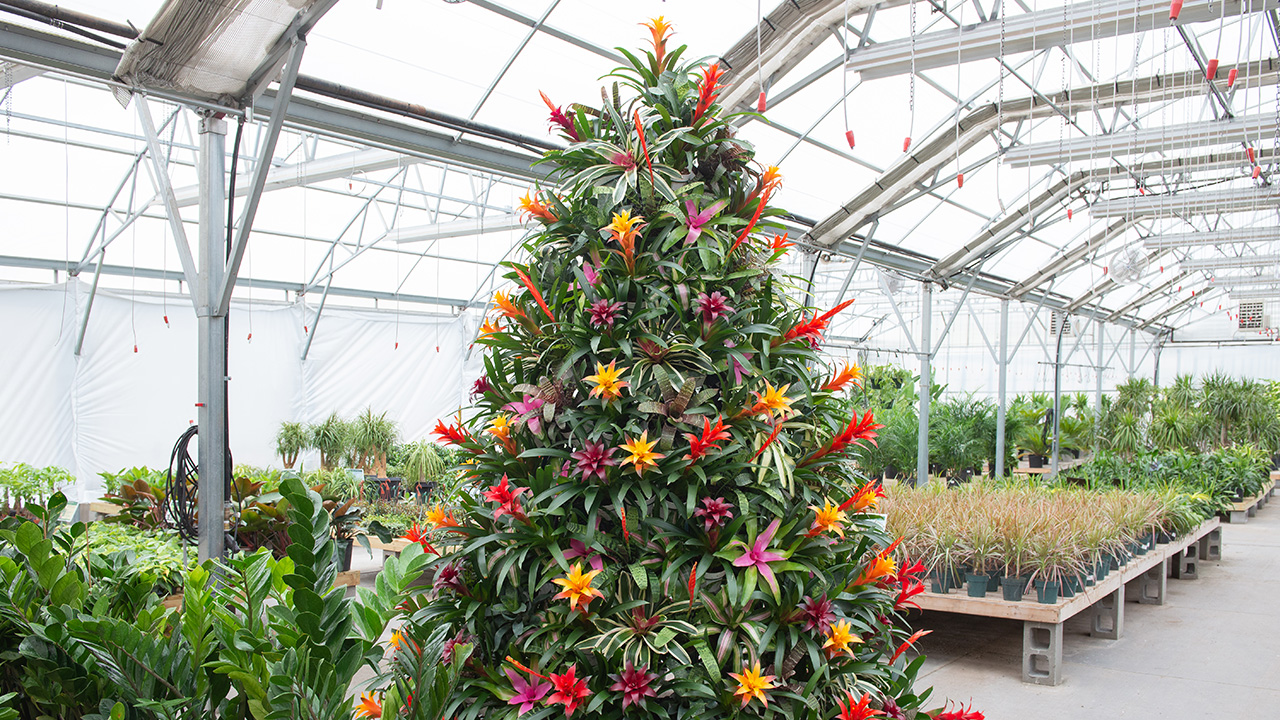
Meet the Bromeliads
In the plant family Bromeliaceae, there are thousands of species grouped into dozens of genera, including plants you’d have no idea were related – like air plants and pineapples. Bromeliads are native to Central and South America and can be found living everywhere from sea level to the highest mountaintops. Some bromeliad species live in the desert, some prefer swamps, some grow rooted in soil, and some grow as epiphytes on other plants. The most familiar bromeliads – some that we keep in our homes – include members of the genera Aechmea, Tillandsia, Guzmania, Vriesea, and Neoregelia. You’ll find bromeliads in each of these groups in the greenhouse, and this year’s tropical tower features colorful examples from the last three.
Guzmania
Bromeliads in the genus Guzmania are probably the most familiar to houseplant parents. These popular bromeliads feature a slender, cylindrical flower stalk that rises above a rosette of glossy green, strap-like foliage. The flower stalk is made up of layers of colorful bracts with tiny true flowers appearing between the layers. The flower stalks last for months and come in vivid shades of red, yellow, pink, and glowing orange.
Vriesea
For many bromeliads in the genus Vriesea, boldly patterned foliage replaces a colorful flower stalk as the focal point. On our tree, look for two of these species of Vriesea – V. gigantea, and V. fosteriana – both with distinctive patterns of horizontal bands crossing each leaf. But some members of the genus Vriesea do produce a colorful flower spike above their foliage, and it’s flattened from side to side –like a spoon or a paddle. In the tree, we also have Vriesea splenriet, an unusual combination of both striking banded foliage and a bright orange, flame-like flower stalk.
Neoregelia
You’ll find several members of the shorter but no less beautiful Neoregelia genus in the tree too. Like many species of Vriesea, Neoregelia also keep their flowers low and use the foliage rosette to show their beautiful color, which can be vibrant shades of red, pink, orange, and purple along with interesting spots, stripes, and other variegations too.
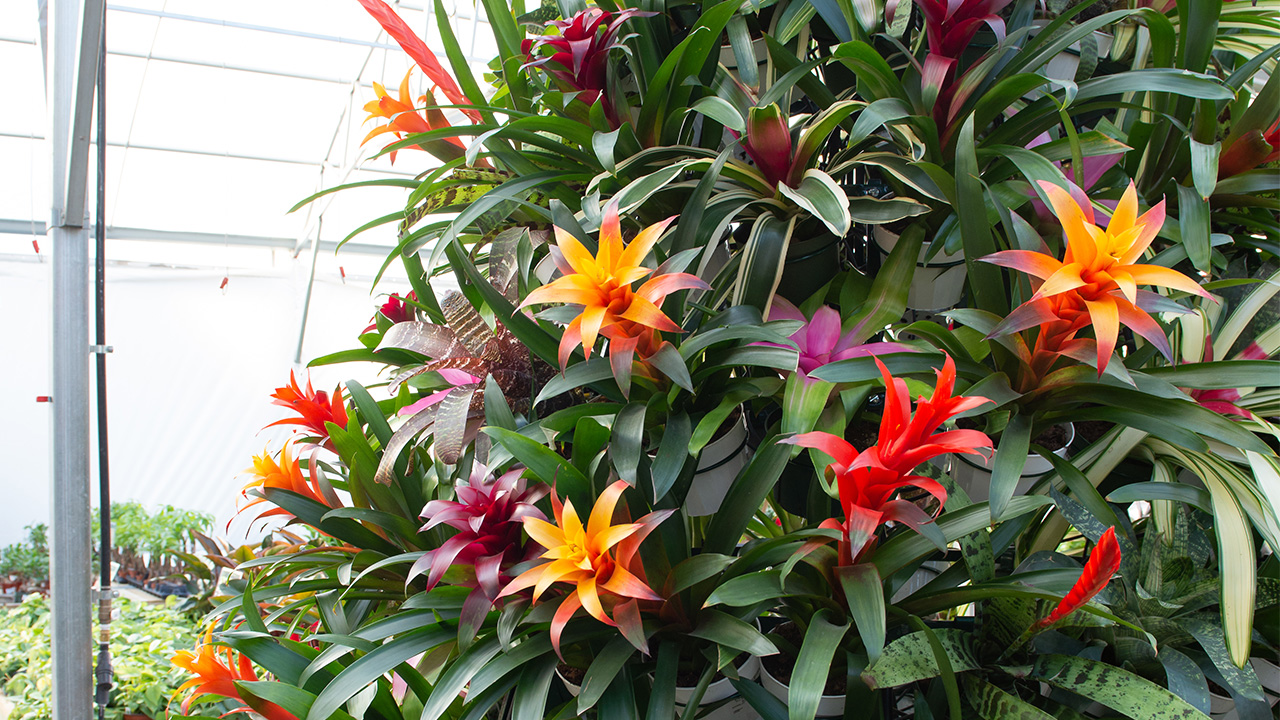
About Their Home
In their native habitats, these bromeliads are epiphytes, meaning they use their roots to cling harmlessly to taller plants as they collect moisture and nutritious organic material in the cup-like center of their foliage. But luckily for us, they’ve adapted to life as potted houseplants too – and they’re easy to care for. Like a lot of houseplants, they enjoy bright, indirect light and average home temperatures. About the only thing they won’t tolerate about terrestrial life is soggy soil which can lead to root-rot, so be sure to let the top half-inch or so of soil dry before watering. And let any excess water drain away completely. You can also keep water in the central cup formed by the foliage but be sure to change it out every few days to avoid damaging bacterial growth and salt build-up.
Tips for Reblooming
Most bromeliads will only produce one flower stalk in their lifetimes – and fortunately, that stalk can last for months. When the bloom finally fades, many people replace the plant with a new one, but if you’re up to an interesting plant challenge, you can try to coax out another generation of color. After blooming is done, look for “pups,” or baby plants appearing around the base of the original plant. When these pups get big enough to form their own rosette, place the entire pot in an air-tight plastic bag with a ripe apple for about a week. The apple releases ethylene gas that should trigger the formation of another flower stalk.
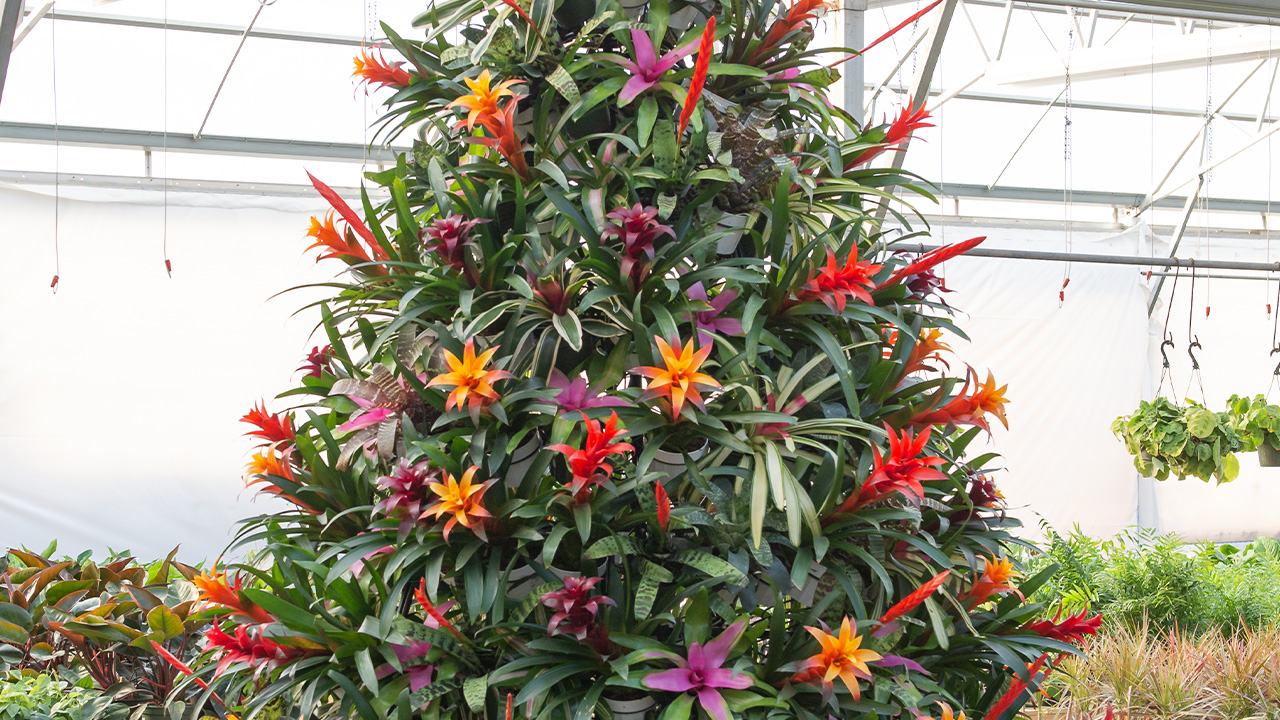
Come See Our Bromeliad Tree
For a little taste of the tropics this holiday season, stop by our greenhouse to see the bromeliad tree – and our bright red poinsettia tree too. Both are popular backdrops for holiday photos, and we hope they inspire you to take a little of their vivid color home with you too. If you have any questions, just ask our team – we’re happy to help. And be sure to stop by the Information desk where we’ll wrap your plants to protect them before you head out into the cold.

